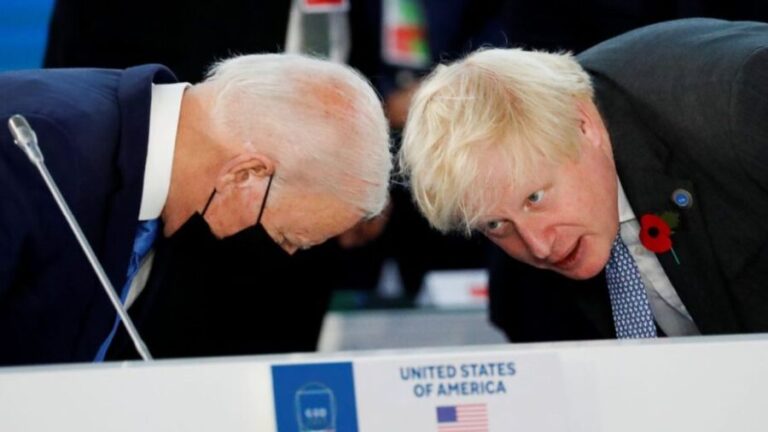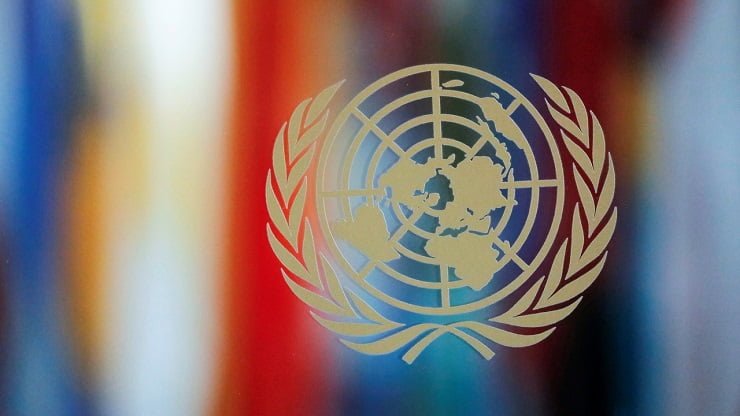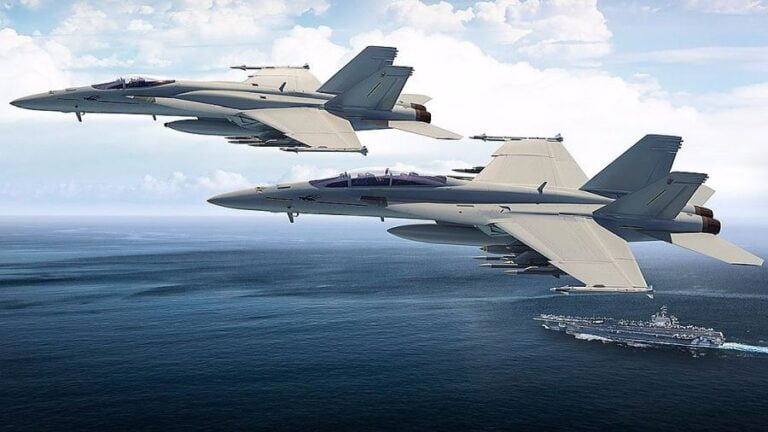Five Underreported Initiatives That Change the World
The Pacific Alliance, Three Seas Initiative, Continental Free Trade Area, Vision 2030, and the Asia-Africa Growth Corridor are changing geopolitics, but comparatively few people have ever heard of these projects, let alone have any idea how Russia could benefit from them.
The world is in the midst of multiple paradigm-changing processes as the post-Cold War Unipolar World Order gives way to the Multipolar World Order of the New Cold War, marked by a diversification of stakeholders in the global system and the struggle to equalize their role in International Relations. The friction between the previous world model and the incipient one has led to a renewed round of intense Great Power competition between their proponents, mostly represented by the US and Russia & China, respectively, with each side working hard to woo others to their way of thinking. The US wants its partners to invest in largely preserving the Washington Consensus and only undertaking minimal reforms within this American-led system, while Russia and China believe that more ambitious changes are required and that the entire world structure must gradually evolve to more accurately represent the emergence of more power centers.
One of the prevailing trends of these present times has been the launching of ambitious integrational initiatives that seek to bring together a host of different states in pursuit of shared objectives, whether geopolitical, economic, or both, and these platforms have naturally become objects of strategic competition in the New Cold War. South America’s Mercosur, for example, is in the throes of an existential crisis, just as Unasur is too, having been torn apart by unipolar intrigue over the past couple of years. Others, though, have a much more promising future, but have curiously been underreported on until now. Most people are already aware of the CSTO, SCO, BRICS, AIIB, and OBOR, yet comparatively few know anything about the Pacific Alliance, Three Seas Initiative, Continental Free Trade Area, Vision 2030, and the Asia-Africa Growth Corridor that are changing the world, which is why this analysis aims to raise awareness about each of them and explain the best way for Russia to interface with them to its ultimate benefit.
The Pacific Alliance
A relatively new neoliberal trading bloc created only in 2012, the Pacific Alliance brings together Mexico, Colombia, Peru, Chile, and prospectively soon Costa Rica and possibly Panama into a geographically expansive north-south trading bloc. Unlike its hemispheric counterpart Mercosur, the Pacific Alliance is rapidly growing and has become stronger by the year, with an organizational intent to become Latin America’s premier platform for developing more robust trading ties with Asia. Pursuant to this, three of its four official members (Mexico, Peru, and Chile minus Colombia) originally planned to join the US-led Trans-Pacific Partnership megabloc until Trump withdrew from it, though they still managed to symbolically revive it even without Washington’s participation.
In any case, the Pacific Alliance is more of an economic initiative than a geopolitical one, though it might soon take on some characteristics of the latter in that its countries generally support the US’ hemispheric objectives, especially relating to Venezuela for instance. However, Trump’s dramatic levelling of aluminum and steel tariffs on his nominal NAFTA allies in Mexico and the leading position that populist leftist-nationalist presidential contender Andres Manuel Lopez Obrador holds prior to the country’s upcoming election on 1 July suggest that the Pacific Alliance’s leader might be willing to display a newfound and unprecedented independence in the future, which is where Russia could come in.
Eager to develop economic ties with non-traditional partners, Moscow could try to advance a free trade agreement between the Eurasian Economic Union and the Pacific Alliance, which the latter might suddenly be more interested in clinching for the aforementioned circumstantial reasons.
The Three Seas Initiative
Poland unveiled an ambitious integrational platform in 2016 bringing together Austria and the post-communist EU members of “New Europe” spanning the three seas region of the Adriatic, Baltic, and Black Seas, unofficially hoping to recreate its interwar “Intermarium” vision in a modern-day context but formally trying to pool together this bloc’s collective political and economic resources in order to enhance their chances of striking better deals with Brussels and the EU’s Western European leaders. The Three Seas Initiative isn’t often in the news, but Trump did speak at its 2017 Warsaw Summit in a clear sign of the US’ support for this transnational body, likely due to the potential that it has for one day creating a “cordon sanitaire” that serves as a wedge in preventing a comprehensive German-Russian rapprochement.
For as grand as Poland and its American ally envision the Three Seas Initiative’s geostrategic function as being, the group is actually divided along a north-south axis over its members’ relations with Russia. The northern half of Poland and the Baltics despises the country and especially its Nord Stream II project, while the southern half centered on Austria-Hungary is much more pragmatic in their relations with it and are actively encouraging the construction of more Russian pipelines to their people. This intra-bloc friction won’t deter its members from cooperating with one another in maximizing the benefits of Chinese Silk Road investment in their shared Three Seas space nor in backtracking on forming a united front for bettering their odds of successfully bargaining with Brussels, but it will stop it from becoming an anti-Russian organization.
Russia’s approach to the Three Seas Initiative can be expected to remain largely the same in continuing cooperation with its more pragmatic southern members and trying to transform the goodwill between them into tangible economic investments.
The Continental Free Trade Are
Just like all other parts of the world, Africa is finally (if belatedly) pursuing the continent’s economic integration through the recent signing of the Continental Free Trade Area between most of its countries that aims to establish an EU-like free trade space. While it remains to be seen how effectively it’s implemented and whether or not there will be any inadvertent problems that arise between rival states and already existing regional blocs like the Southern African Development Community and the East African Community, the best-case scenario that its many signatories are hoping for is that Africa will finally become a more independent pole of economic power in its own right which is perceived as one large investment zone that’s more attractive for non-African investors.
The end goal is to transplant the structural economic basis of the EU onto the African Union but in a more neoliberal fashion that national leaders believe is necessary for jumpstarting growth and development, thereby enabling them to simultaneously court more investment while encouraging existing entrepreneurs to expand their operations beyond their host countries’ borders and further into the region beyond. Russia could take advantage of this by using its strategic presence in Egypt, Sudan, the Central African Republic, and perhaps soon even Ethiopia and Rwanda too as a springboard for deepening economic relations with Africa as a whole via the Continental Free Trade Area, though provided that its national companies have the will to do so.
To assist with this, Russia will probably use the Red Sea as its gateway to East and Central Africa, striking strategic partnerships with coastal and transit countries as it strives to gain preferential trading access for its companies in the resource-rich central portion of the continent.
Vision 2030
Saudi Crown Prince Mohammed Bin Salman has made the Vision 2030 series of socio-economic reforms within his country the hallmark of his early de-facto rule over the Kingdom in proactively initiating Saudi Arabia’s inevitable post-oil transition before it’s too late. This responsible move is characterized by the courting of real-sector economic investments from China that are designed to turn his state into a tri-continental Silk Road hub strategically situated at the crossroads of Afro-Eurasia, but it’s not necessarily a Chinese-dominated process because any country can invest in it too. In order to increase his country’s labor pool and therefore give investors more opportunities to get involved, the Crown Prince is lessening strict Wahhabi restrictions on women’s freedom of movement and right to work, though this hasn’t been without whispers of some domestic opposition.
Russia can assist Saudi Arabia with this commendable task by sharing its peoples’ centuries-long experience with what is conventionally described by non-Muslims as “moderate Islam”, working to build a bond of trust between these two non-traditional partners that could then be expanded through more intensive cooperation between Russia’s majority-Muslim autonomous republics and the Kingdom. Russian Railways, the national leader in this industry, also announced at the end of last month that it would like to participate in constructing the Trans-Arabian Railway that’s presumably one of the physical pillars of Vision 2030, so Russia might have a unique chance to cooperate with China on a Silk Road investment in a third-party state for the first time ever, potentially paving the way for more projects of this sort elsewhere in the future if this one proves successful.
Altogether, Russia’s role in Vision 2030 could foreseeably be one of leveraging a combination of “religious diplomacy” and its renowned infrastructure expertise in certain industries in order to expand its new Mideast presence into the cash-flush Gulf while reaping a hefty return on its investments.
The Asia-Africa Growth Corridor
The last of the five-mentioned but underreported international structures changing geopolitics is the Indo-Japanese Asia-Africa Growth Corridor that’s meant to be these two Great Powers’ answer to China’s One Belt One Road global vision of New Silk Road connectivity. They obviously can’t replace or adequately compete with the many connective infrastructure investments that China has made all across the world and especially in the Global South, but they aspire to carve out their own niche in soft infrastructure through helping their partners in the healthcare, educational, and job training fields, among others that Beijing has been previously lambasted by some for supposedly neglecting. It’s still too early to say whether this initiative will yield the geostrategic dividends that its backers envision, but it’s nevertheless still a promising pan-hemispheric project that holds a lot of potential.
Russia has its reasons getting involved with the Asia-Africa Growth Corridor, which include strengthening ties with its historical partner India; accelerating the ongoing rapprochement with Japan; showing China that it has multilateral investment options with the hopes of then striking better Silk Road deals; and deepening its presence in the Global South. It can advance all of these by offering up a quid pro quo of preferential investment opportunities for India and Japan in its Far Eastern and Arctic regions in exchange for some role or another in their African and ASEAN projects. Russia can’t ignore an initiative as far-reaching and globally important as the Asia-Africa Growth Corridor even if its implied intent is to challenge China, so it must utilize all means at its disposal to get involved with this, even if only to maximize its “balancing” capabilities.
Having said that, Russia will probably find a way to implicitly implement the quid pro quo strategy mentioned above as a means of first proving that the concept of its cooperation with the Asia-Africa Growth Corridor is capable of yielding results prior to officially announcing its partnership with it.







